We have previously detailed the extensive illegal gold mining problem in the southern Peruvian Amazon (Madre de Dios region), but here in MAAP #28 we detail the emergence of another deforestation hotspot in the region. Image 28a shows the intensification of this hotspot, located along the newly paved Interoceanic highway around the town of Iberia (see Inset F), between 2012-14 (left panel) and 2015 (right panel). Note that the gold mining hotspot, indicated by Inset E, remained consistently high among the two time frames.
2015 Deforestation Hotspot Base Map
This analysis builds off the previous MAAP #26, where we presented an initial map of “Deforestation hotspots in the Peruvian Amazon in 2015,” based on an analysis of data from the new GLAD* alerts.
Image 28b shows an updated version of the 2015 Peruvian Amazon deforestation hotspots map. Inset F shows the new hotspot featured in this article (see details below).
Note about the Hotspots: Insets A and B indicate two hotspots in the Ucayali region – see MAAP #26 for more detail. Insets C and D indicate two hotspots in Huánuco that we are currently analyzing. Inset E indicates the illegal gold mining zone known as La Pampa, described in various MAAP articles (for example, see MAAP #12). Inset F shows the area of interest in this article.
New Deforestation Front
Image 28c shows detailed information about the deforestation surrounding the town of Iberia in northeast Madre de Dios (see Inset F in Image 28a for context).
Note the extensive deforestation in both 2014 and 2015 along both sides of the Interoceanic highway (1,830 hectares, or 4,522 acres).
Also note that much of the deforestation is an agglomeration of small-scale patches and occurs within forestry concessions (timber and rubber harvesting).
Insets F1 and F2 show the zooms described in greater detail below.
Zoom F1
Image 28d compares two satellite images of the area indicated in Inset F1 (see Image 28c for context) between September 2013 (left panel) and January 2016 (right panel). Note the large increase in newly deforested areas for what appears to be small-scale agricultural inside a timber concession.
Zoom F2
Image 28e compares satellite images of the area indicated in Inset F2 (see Image 28c for context) between September 2013 (left panel) and December 2015 (right panel). Note the large increase in newly deforested areas for what appears to be small-scale agricultural within a rubber concession.
References
* Produced by the University of Maryland, Google, and WRI’s Global Forest Watch. http://www.globalforestwatch.org/map/5/-9.31/-75.01/PER/grayscale/umd_as_it_happens
*Hansen, M.C., A. Krylov, A. Tyukavina, P.V. Potapov, S. Turubanova, B. Zutta, S. Ifo, B. Margono, F. Stolle, and R. Moore. Humid tropical forest disturbance alerts using Landsat data. Environ. Res. Lett. 11: 034008.
Citation
Finer M & Novoa S (2016) New Deforestation Hotspot in Madre de Dios, 2016. MAAP: 28.

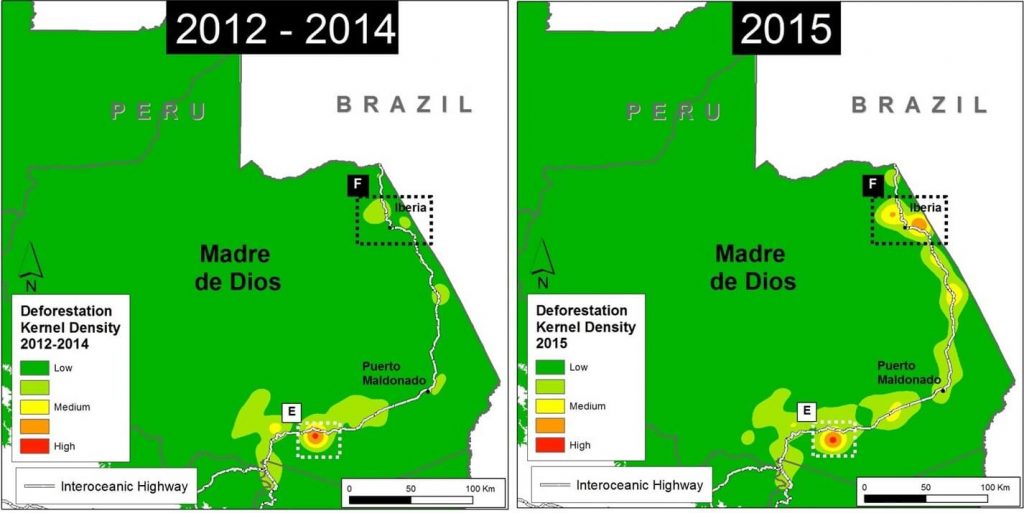
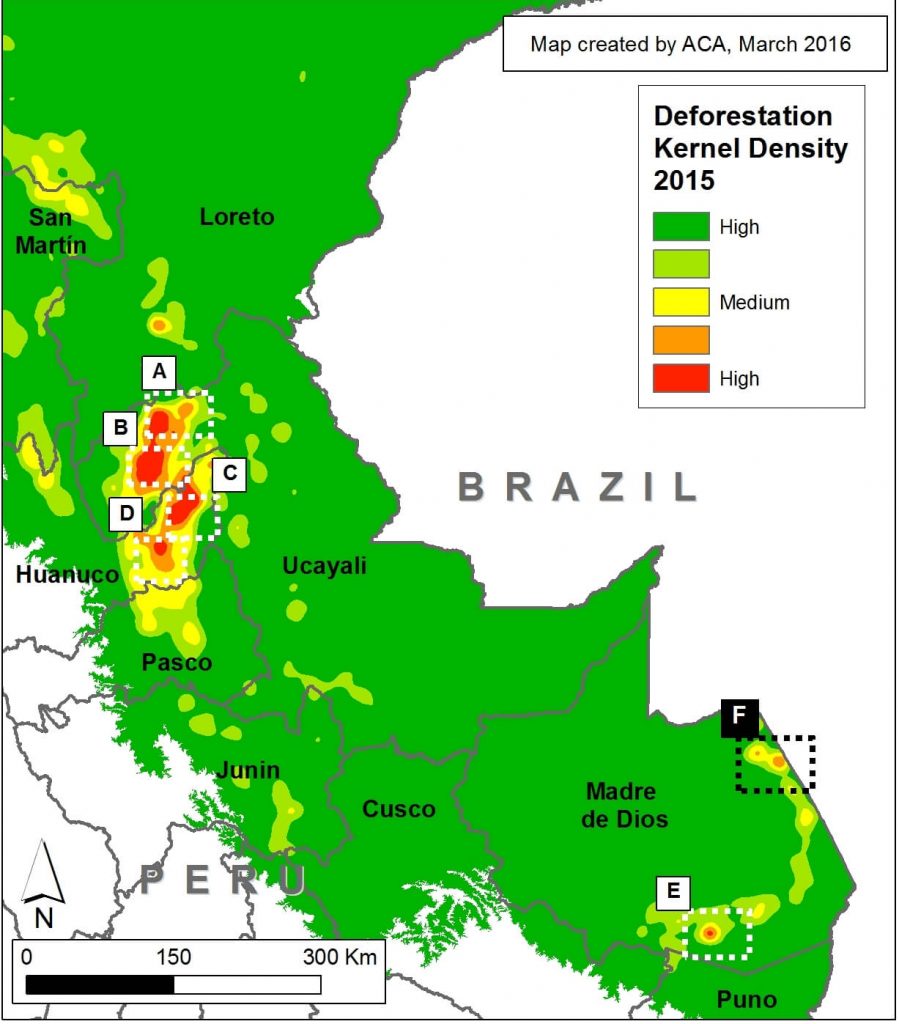
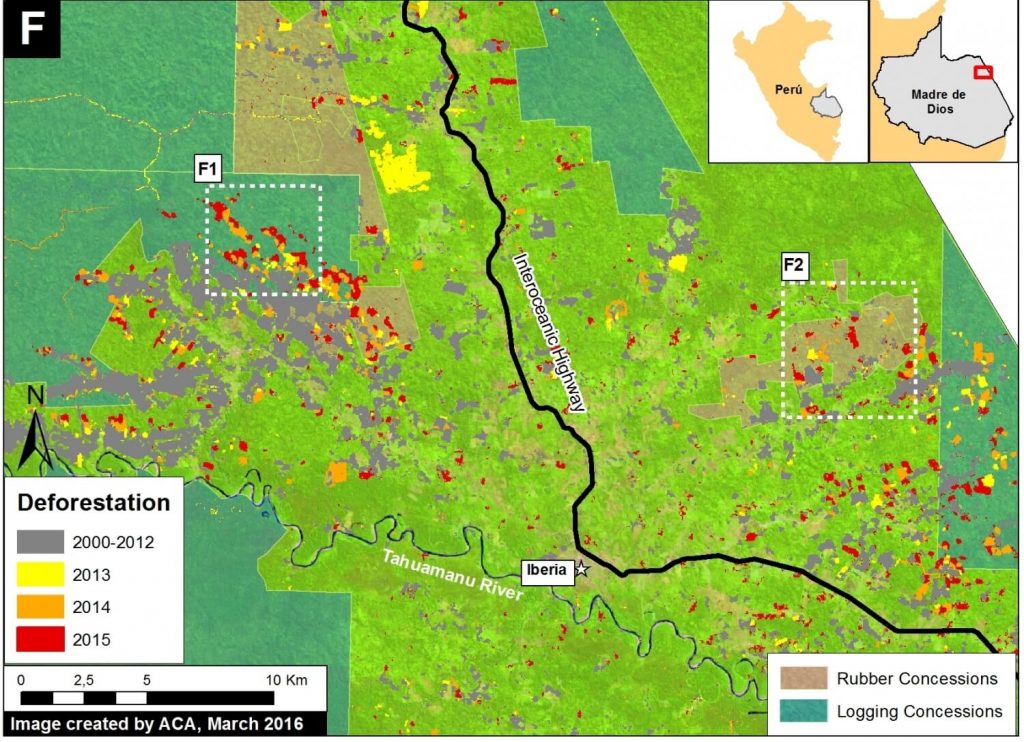
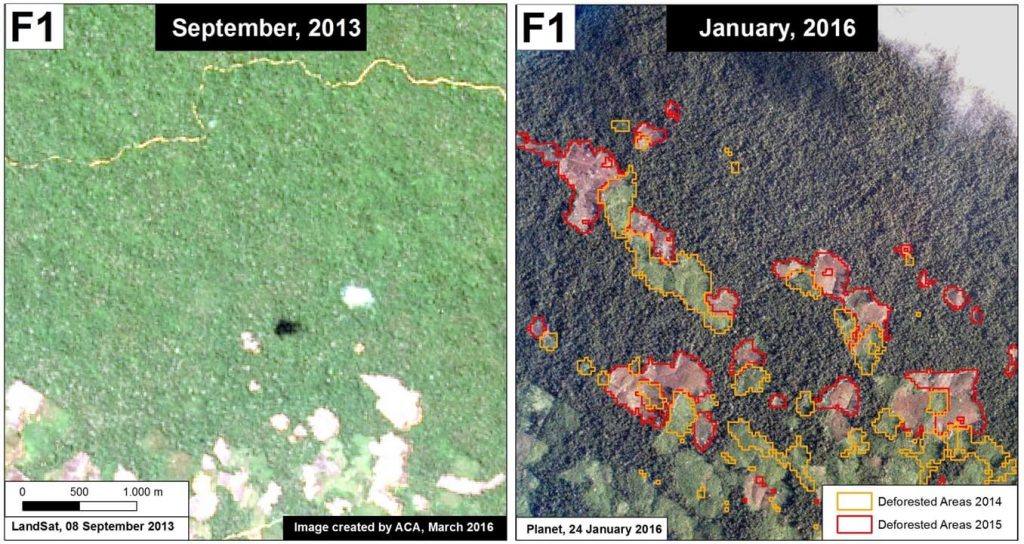
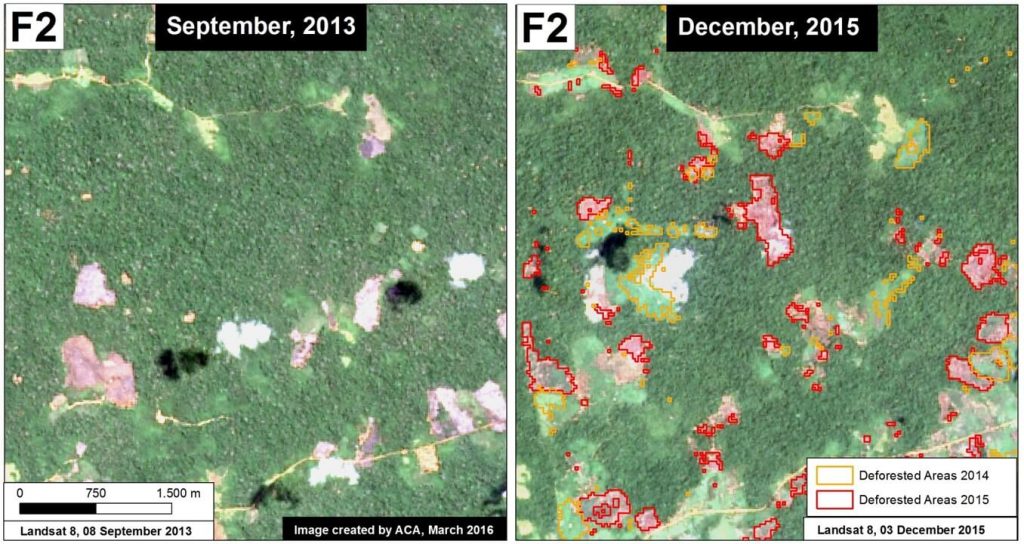
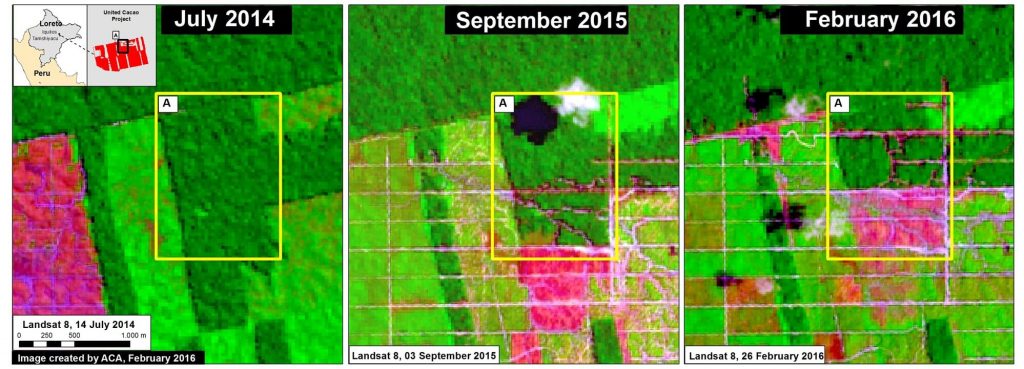
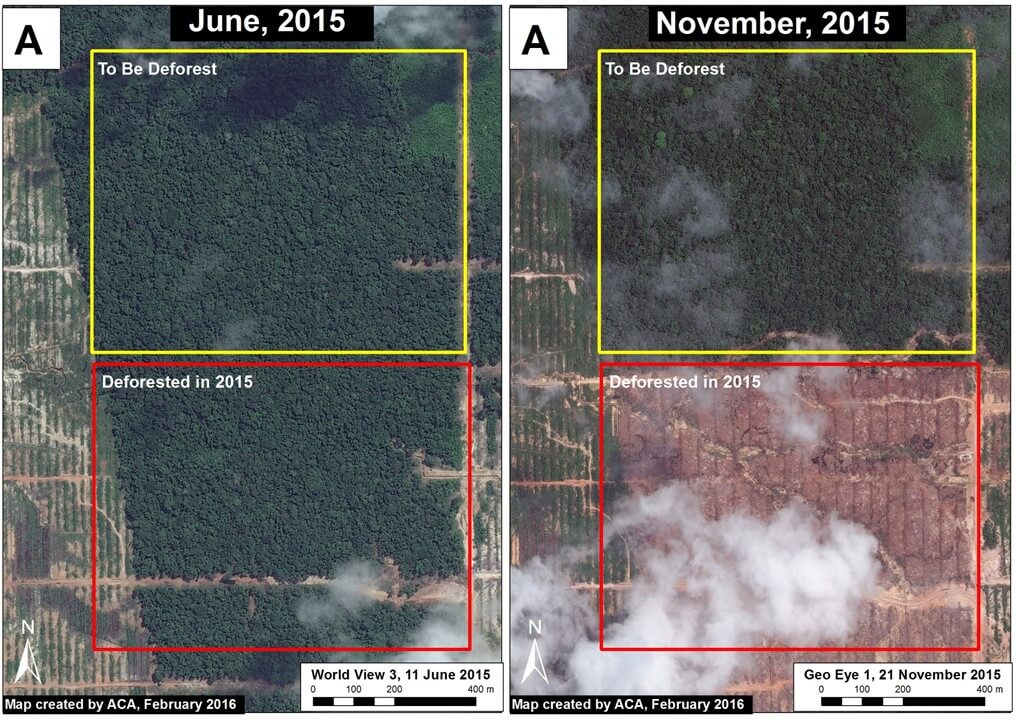
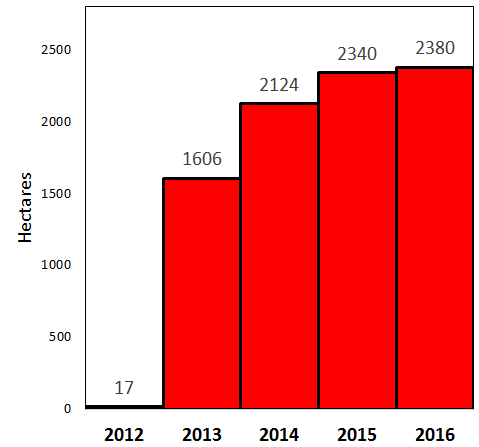
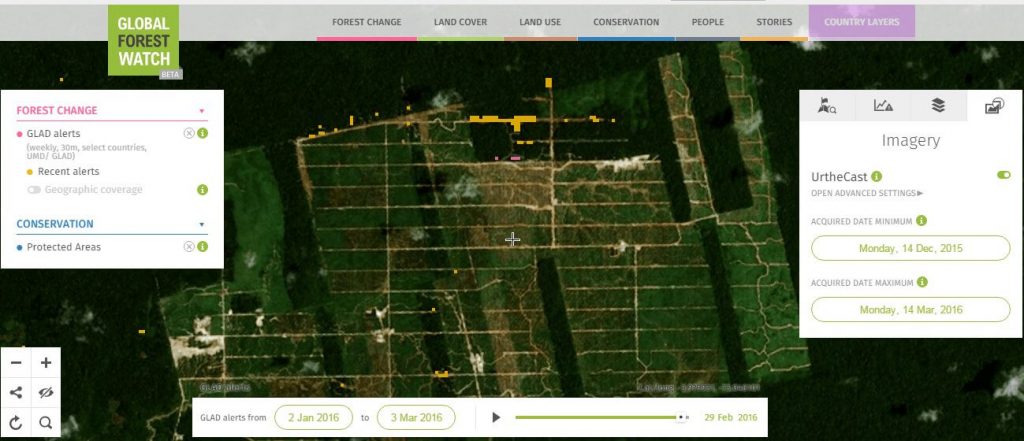
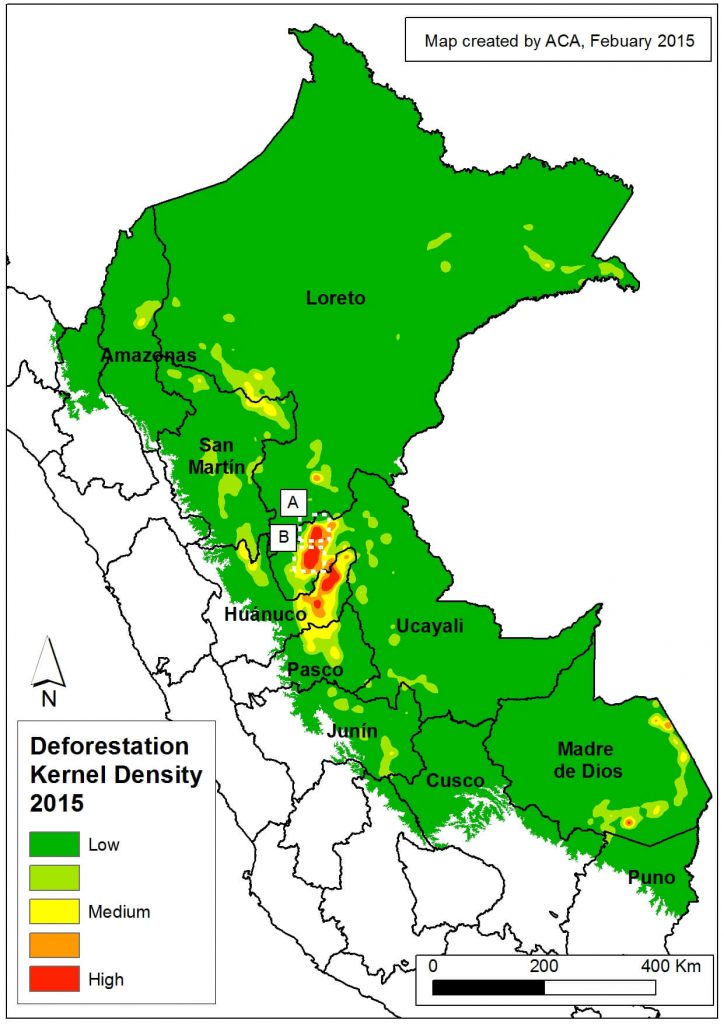
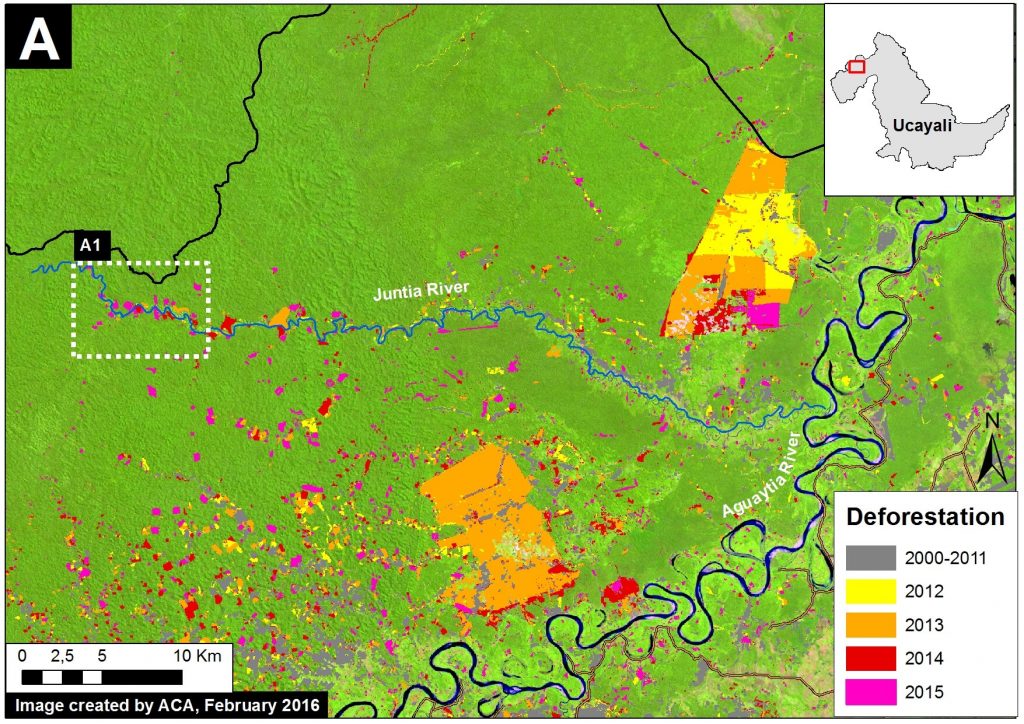

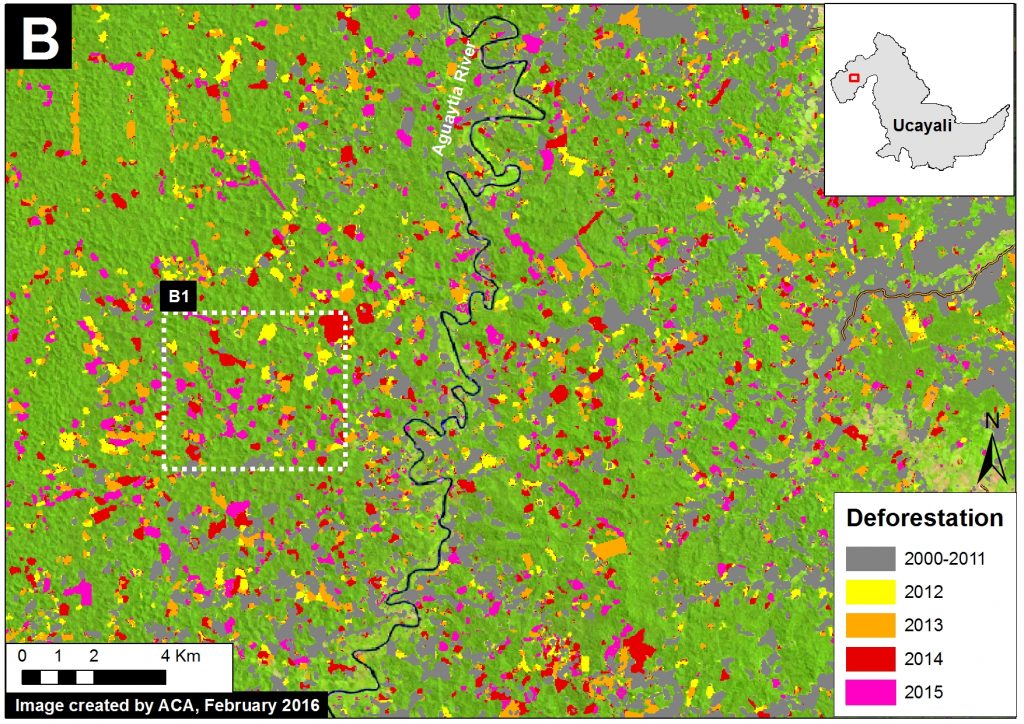

